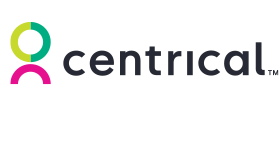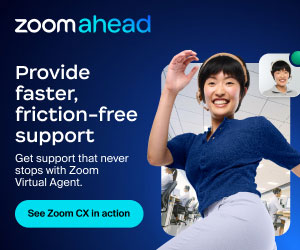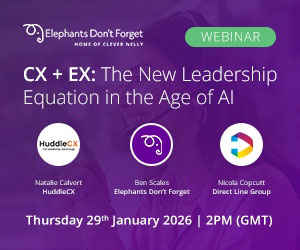The way we work, and the digital landscape, are rapidly evolving. The Performance Experience Methodology can help your organization evolve with it. Here is how.
The Performance Experience (PX) Methodology improves operational performance and customer experience by leveraging AI to personally guide frontline employees across every stage of the employee lifecycle.
It also enables frontline employees to become proficient faster, retain new knowledge, and deliver strong performance even as business needs change.
We have launched this methodology because most performance management practices are no longer relevant or effective.
And organizational leaders are increasingly recognizing the impact of their frontline employees’ experience on the customer experience; as such, rather than “manage” from the top down, leaders are putting the employee at the centre, and taking a more modern, human-focused, and employee-centric approach.
There are tangible, actionable steps you can take to modernize the employee experience at your organization with PX.
We share how the four core strategies of PX can be applied to each stage of the employee journey (pre-boarding and onboarding, nesting, performance, and offboarding/reboarding) to deliver a better customer experience, reduce operating costs, improve service, quality, and sales, retain talent, and increase employee lifetime value.
The Core Four
The Performance Experience Methodology consists of four core strategies:
Align
Set employees up for success by aligning them with their goals and making their progress visible so they are clear on expectations.
Engage
Create a sense of purpose, build meaningful connections, and make the experience rewarding to motivate employees and keep them invested in their individual, team, and business success.
Perform
Provide employees with the knowledge, skills, and support they need, in the moment they need it, to empower them to reach peak performance.
Optimize
Continuously re-align, listen, and respond to employees to ensure their needs are being met and that their experience is efficient and frictionless.
These strategies are designed to impact every aspect of each stage of the employee journey. In the next section, we will explore these strategies in the context of the pre-boarding and onboarding stage.
PX in Action: Pre-boarding and Onboarding
Your newly-hired frontline employees might be new to this type of role – or new to the workforce altogether, potentially making the onboarding process both intimidating and overwhelming.
New hires (especially those working remotely) might find it difficult to know where to go for support. And support is really key here – if left unsupported, even the most capable, hardworking new hires who have poor onboarding experiences will drive down quality and service levels, decrease overall efficiency, and cause costly early attrition.
This is why frontline organizations must implement performance experience strategies before and during onboarding. Here is how to do it.
Align: Get on Board BEFORE Day One
Frontline organizations are faced with sky-high attrition rates, making a comprehensive pre-boarding and onboarding program, and alignment before the new hire’s first day, especially important. For example, one major cause of early attrition is job shock.
Ensuring that new hires are familiar with their role and responsibilities, and the basics of the company strategy, structure, and objectives before they start will drastically cut early attrition and first-day ghosting.
New hires should also have easy access to information on elements such as HR (Human Resources) policies and procedures, product training, on-the-job tips, where and how to seek support, and other foundational elements.
Sharing this information (especially product training and on-the-job pointers) at a steady cadence and reinforcing it periodically keeps new hires from feeling overwhelmed and helps fight the “forgetting curve.”
Finally, foster a sense of community to engage your new hires before they start. Make introductions to the new hire’s team and team leader – and don’t be afraid to get creative!
Consider having the new hire share a quick video to introduce themselves, or perhaps send them a video with the team and team leader making a fun introduction. Whatever you do, make it engaging and personal.
Engage: Do It Early and Often
When it comes to the performance experience, engagement is critical and heavily impacts the level of effort an employee brings. A lack of engagement will significantly (and negatively) affect productivity and the customer experience, also contributing to early attrition levels.
As we just covered, creating a sense of community and connection should be a priority engagement strategy throughout onboarding. This is especially true for hybrid and remote teams, as it can be tough to build a digital culture. This can be achieved through:
- Implementing gamification, including recognizing, and rewarding employees for progressing through the onboarding journey.
- Enabling managers to frequently connect with new hires. This should involve regular pulse checks and measuring progress in real-time to identify and address potential issues as soon as possible and before poor practices become habits.
- Promoting a digital culture through team conversations and social knowledge sharing.
For example, keeping a new hire engaged can be as simple as recognizing onboarding milestones in a team chat with virtual kudos or a milestone badge. Managers can also spotlight tenured employees and promote collaboration by rewarding them for sharing knowledge with new peers.
Perform: Don’t Make New Hires Drink From a Firehose
The new hire experience can be very much like trying to drink from a firehose – they are hit with a ton of new information at once as they start acquiring the needed knowledge and skills. And often, this information is not absorbed or retained in a way that can be applied on the job, or at all.
But the Perform strategy sets new hires up for long-term success by ensuring that they retain their training and learning and have the competencies and confidence they need. This includes:
- Providing short, interactive role-play simulations
- Reinforcing learning with regular knowledge checks
- Leveraging AI to address individual knowledge gaps
- Making it easy to find answers to frequent questions
Optimize: Feedback (Especially Frequent Feedback) Matters
The optimize strategy focuses on collecting and acting on feedback from employees about the onboarding experience. Feedback tends to be collected too late in the process, with high-potential employees leaving before there is an opportunity to address their concerns.
Therefore, we recommend that you optimize the performance experience during onboarding, collecting frequent feedback and encouraging new hires to participate.
Collecting this information is critical to ensuring your onboarding program meets employees’ needs and sets them up for success. And as you implement process improvements, share updates so that employees feel heard.
Key Takeaways
We have just covered some basics around the Performance Experience Methodology, its four strategies, and how these can be applied to the first stage of the employee journey. Here are a few key takeaways:
PXM helps drive strong operational performance and customer experience by personally guiding frontline employees across their journey and helping them stay proficient, retain knowledge, and deliver a robust performance.
Contact centres have high attrition rates, with first-day ghosting and other forms of early attrition as especially challenging pain points. Applying the four strategies of PX can help boost retention rates, performance, and customer experience.
By aligning new hires with their role, expectations, and the company before their first day, as well as fostering a sense of community and camaraderie, organizations can dramatically decrease early attrition rates.
Keeping new hires engaged is essential. Without engagement, productivity and customer experience will suffer, while early attrition levels get a boost. This can be as simple as offering kudos for achieving an onboarding milestone.
The Perform strategy sets new hires up for long-term success by reinforcing learning through AI-powered, targeted microlearning, knowledge checks, and more. This helps boost knowledge and training retention, as well as employee confidence.
Organizations can optimize their pre-boarding and onboarding programs by gathering feedback from new hires at frequent intervals during this stage, rather than waiting until after. By waiting, you risk inaccurate feedback and a smaller survey pool.
This blog post has been re-published by kind permission of Centrical – View the Original Article
For more information about Centrical - visit the Centrical Website
Call Centre Helper is not responsible for the content of these guest blog posts. The opinions expressed in this article are those of the author, and do not necessarily reflect those of Call Centre Helper.
Author: Centrical
Published On: 21st Jul 2023 - Last modified: 9th Dec 2024
Read more about - Guest Blogs, Centrical






 Centrical provides a real-time performance management, microlearning, gamification, coaching, and voice of the employee platform for frontline teams. The solution inspires and personally guides employee success and growth by making every moment actionable.
Centrical provides a real-time performance management, microlearning, gamification, coaching, and voice of the employee platform for frontline teams. The solution inspires and personally guides employee success and growth by making every moment actionable. 






























